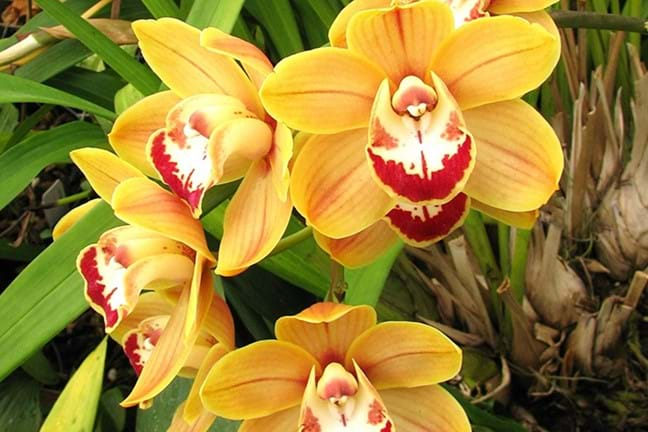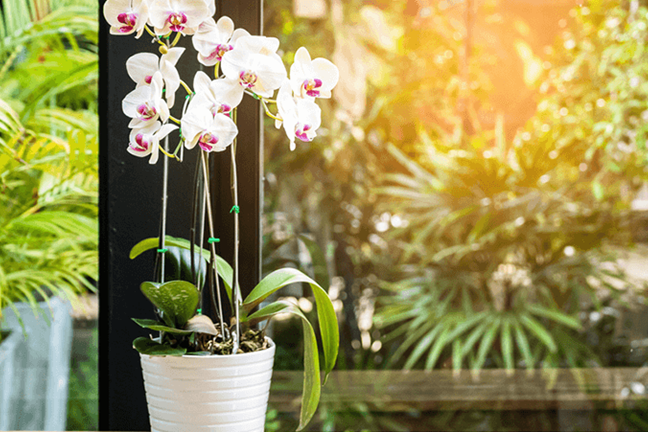How to re-pot Orchids
October is a good month to think about caring for your orchids as many orchids have finished flowering and are about to go into their major growth period.

October is a good month to think about caring for your orchids as many orchids have finished flowering and are about to go into their major growth period.

Cymbidiums are the most popular orchids. They're the ones with the tall flower spikes and bulbous swellings at the base of the long strappy leaves. This is the best time of year to tidy them up and get them ready for the new growing season.
Start by taking a good look at the orchid to see if the clump is crowded enough to need dividing. Sometimes this decision is easy: the bulbous bases are so crowded together that they're almost bursting out of the pot. Or there are a lot of dead bulbs in the pot. With either of these situations, it's worth re-potting. But don't rush into it – a plant can stay in the same pot for a number of years. And remember, after orchids have been divided it can take two or three years for them to reach flowering stage again.

Remove the plant from the pot. Sometimes it's even necessary to break the pot in order to free the orchid.
Take a knife or another strong tool and use it to lever between the bulbs (pictured). Separate the clump into at least two sections.
Remove most of the leafless, dead-looking or squashy bulbs. You can leave a single row of these back bulbs next to the leafy shoots.
Check the roots for damaged, rotted or tangled sections. Remove these.
Choose new pots. Yates Tuscan pots are ideal because they have plenty of drainage holes. Good drainage is critically important for orchids.
Pack some orchid potting mix into the base of the pot.
Sit the orchid in the pot and fill around it with the mix. Make sure that each bulb is sitting above the mix.
Water well and sprinkle some pellets of Yates Dynamic Lifter Soil Improver & Plant Fertiliser on top of the pot.
Begin feeding with Yates Orchid Liquid Plant Food every two weeks.
After Christmas, to encourage flowering, use Yates Thrive Flower & Fruit Liquid Plant Food fortnightly.
Moth orchids (Phalaenopsis spp) are becoming increasingly popular. These can be kept indoors permanently in a well lit position but will, once it's reliably warm, appreciate a spell outdoors in a lightly shaded spot. These plants really appreciate humidity, so keep them well watered in hot weather and mist over the leaves regularly. Moth orchids can produce new shoots and buds from the stem that flowered last year, so only trim dead sections from flowering shoots.
Moth orchids can be re-potted into fine orchid bark every three years or so. Feed during the warmer months with Yates Orchid Liquid Plant Food every two weeks or Yates Thrive Flower & Fruit Liquid Plant Food.
Watch for mealy bugs – Yates Nature's Way Citrus & Ornamental Spray will take care of most of the common pests, including mealy bug.
Slipper orchids, so-named because their flowers resemble a dainty piece of lady's footwear, will appreciate similar care. A break outdoors can be good for these plants, too, but, because they're naturally understorey dwellers, they can tolerate more shade.
